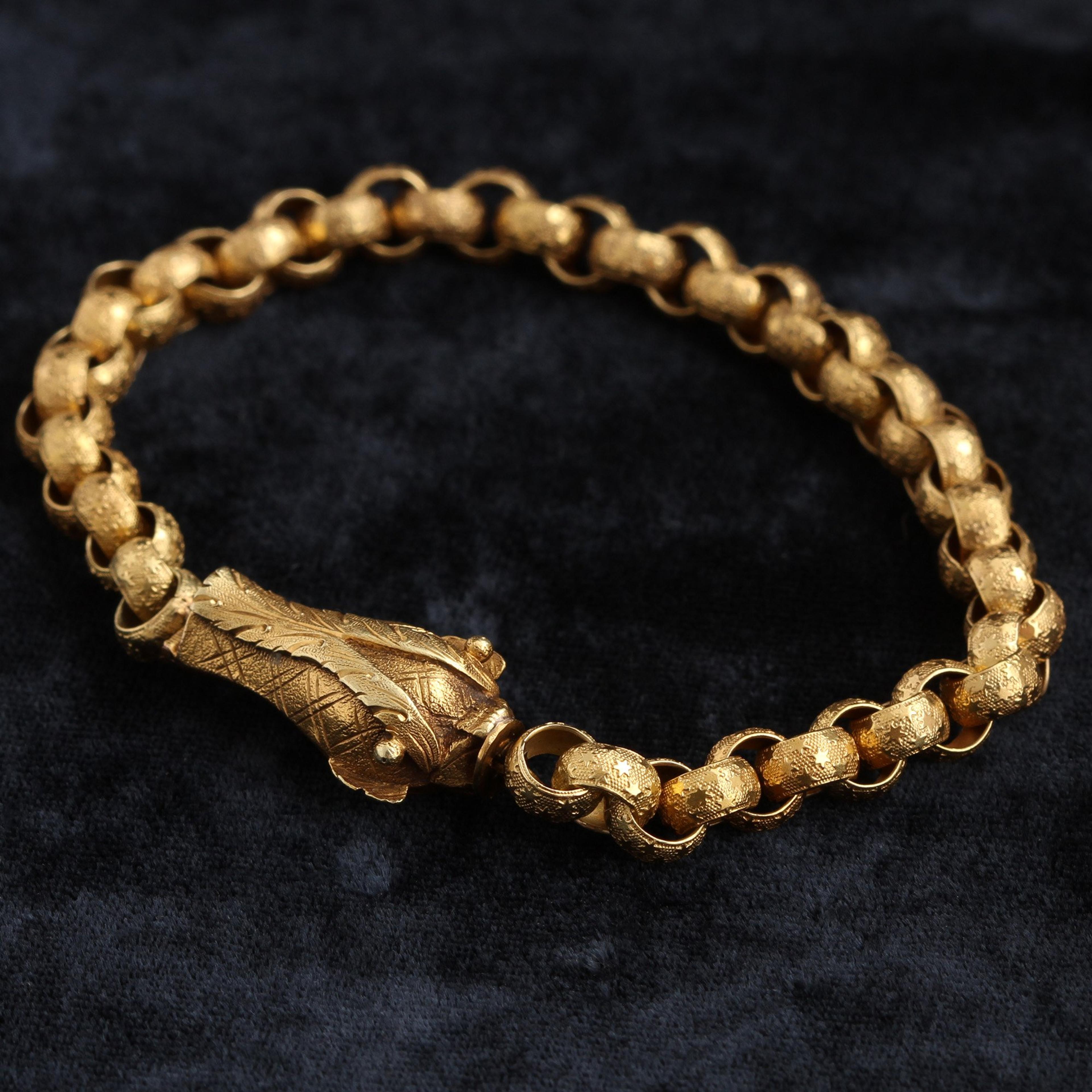This outstanding and very rare Georgian bracelet is crafted in rich 22k gold. The bracelet is composed of a stunning length of handwrought chain - each link detailed with a pattern of stars over a textured ground - and fastens with an exquisite dolphin head clasp. Dolphin-themed jewelry is exceedingly uncommon. The highly stylized rendering of this clever animal includes exaggerated gills, crosshatched patterning, and bold buggy eyes. The borderline abstraction of animals in jewelry is not unusual in pieces from this period. It can be credited to one (or all) of the following factors: a stylistic choice of the artist, the aesthetics of the era, and/or the fact that many of the people responsible for making the sensational zoological jewelry of the Georgian period had never actually seen the creatures they were charged with rendering in gold.
thedetails
- Materials
22k gold (tests)
- Age
c. 1800
- Condition
Excellent
- Size
7.75" length, head measures 7/8 x 1/2", 1/4" width
Need more photos?
Send us an email to request photos of this piece on a model.

Aboutthe
GeorgianEra
1714 — 1837
As imperialist war raged in the Americas, Caribbean, Australia, and beyond, the jewelry industry benefited: colored gems from all over the empire became newly available. A mix of artistic influences from around Europe contributed to the feminine, glittering jewels of the era. Dense, ornate Baroque motifs from Italy showed up in Georgian jewelry, as did French Rococo’s undulating flora and fauna. Neoclassical style made use of Greek and Roman motifs, which were newly popular due to the recently uncovered ruins of Pompeii and Herculaneum. Lapidary methods improved: the dome-shaped rose cut was popular, as was the “old mine cut,” a very early iteration of today’s round brilliant cut.
The boat-shaped marquise diamond cut was developed around this time, supposedly to imitate the smile of Louis XV’s mistress, the marquise de Pompadour. Paste — an imitation gemstone made from leaded glass — was newly developed in the 18th century, and set into jewelry with the same creativity and care as its more precious counterparts. Real and imitation gems were almost always set in closed-backed settings, lined on the underside with thin sheets of foil to enhance the color of the stone and highlight it's sparkle. This makes Georgian rings tough for modern women to wear, especially on an everyday basis: genteel, jewelry-owning ladies of the 18th century were not famous for working with their hands like we are. Nor did they wash their hands as much as we do. Water will virtually ruin a foiled setting, so take special care with your Georgian ring. Very little jewelry from this period is still in circulation, and it's very difficult to repair.



